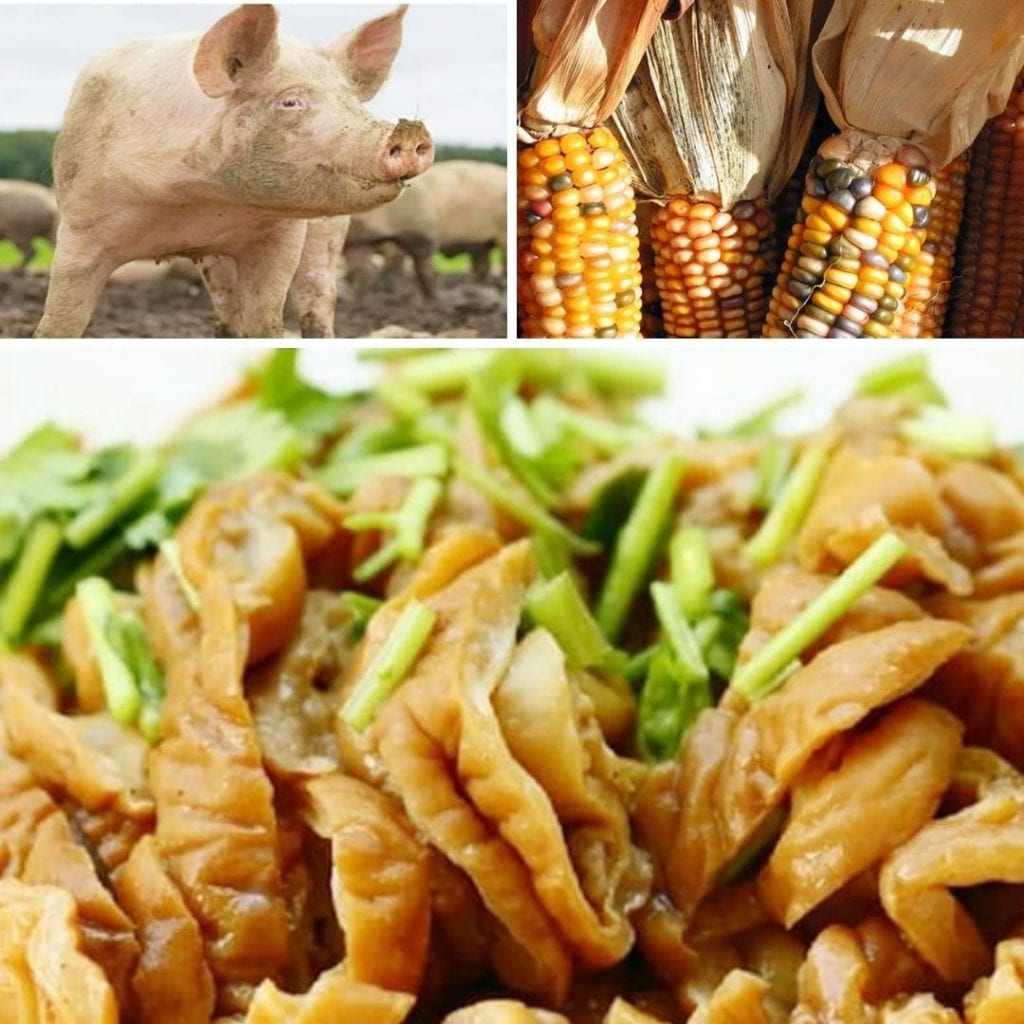
Before the United States was established as a country on July 4, 1776, America was the great new world that thousands of European colonialists so bravely attempted to explore. The colonial period is said to have lasted for 158 years, between 1607 and 1765. But the America of the 16th century wasn't anything like the America of today. The death rate was incredibly high, the resources were scarce, and the idea of fast-food wasn't even conceivable.
But while colonial times had no McDonald's or Burger King to choose from, they were characterized by an "if we can eat, we will eat it" type of thinking. Because when you're stranded in the early desolated 16th century America, there's really no other option but to eat whatever you can whenever you can! Some of the foods on our list are utterly gross, while others are actually surprisingly tasty. So let's take a look at what people used to eat back when America still couldn't be called the "land of plenty."
Hardtack
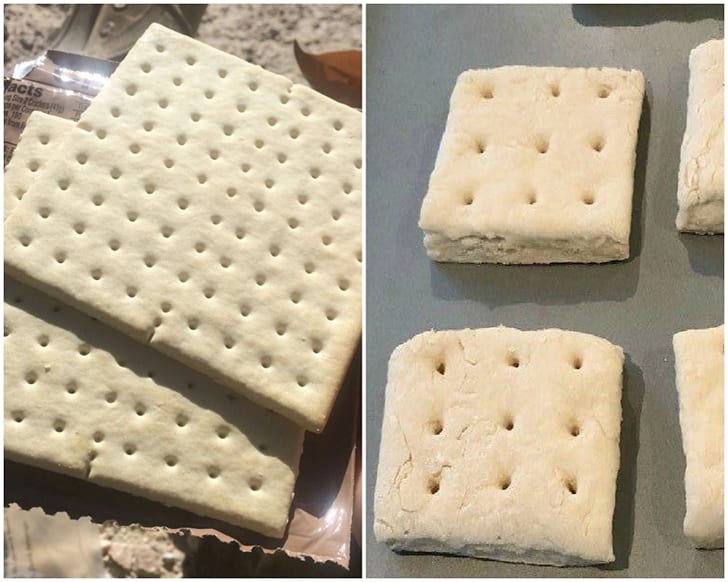
Just like life itself, food can go from the simplest to the most complex. Yes, you can have expensive luxury cuisine for lunch; but you can also tone it down and eat some flavorless crackers. And in the old colonial days, the cream cracker's equivalent was the bland and austere hardtack.
Made from flour and water (with salt as a third, optional ingredient), the hardtack had one basic job: to prevent you from dying of hunger. To this day, a still-intact hardtack cookie from the U.S. Civil War days can be seen on display at the Wentworth Museum of Florida.
Beaver Tails
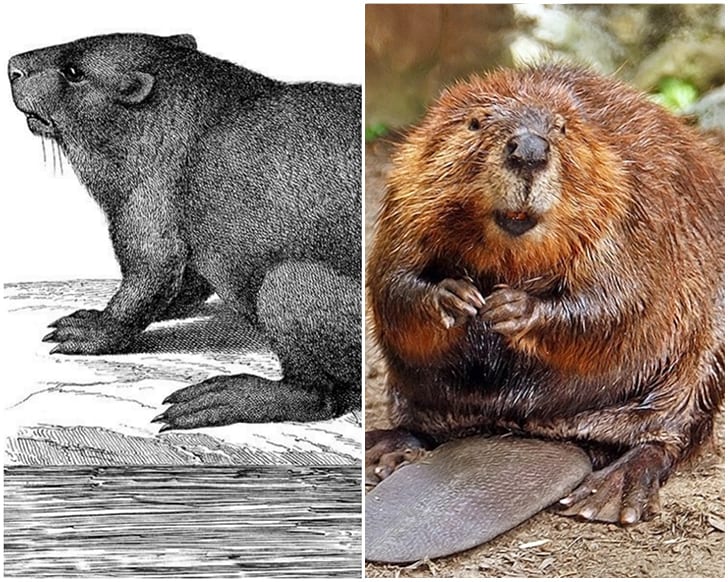
A cute and ingenious animal, the beaver is one of nature's top architects. They are known for building dams in rivers, where they can be protected from predators. Sadly, though, there was one predator in colonial America that the beaver was rarely able to escape from: the relentless hungry human.
Adventurers in colonial times loved to kill beavers and turn their pelts into warm jackets or wintertime hats. But when they did so, they also made the most out of their "delicious" tails. Yes, beaver tails were a popular colonial treat, even though they're mostly comprised of sheer fat.
Ambergris
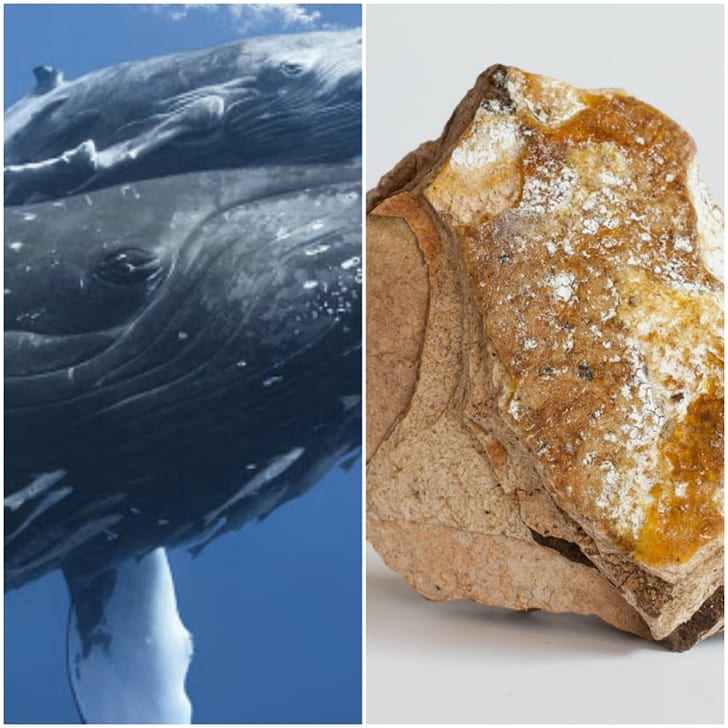
Ambergris is a solid blackish substance found in the digestive system of the cachalot, a type of large, toothed whale. At its most basic, ambergris can be fairly described as whale vomit, and it's said to have a marine and fecal odor. Sounds gross, right?
Well, not if you're a citizen of colonial-time America! Back in the day, ambergris was a rare and expensive delicacy that would put caviar to shame. It was used as a complement to many drinks, including hot chocolate, and added to finely-cooked eggs and other luxury dishes.
Scrapple
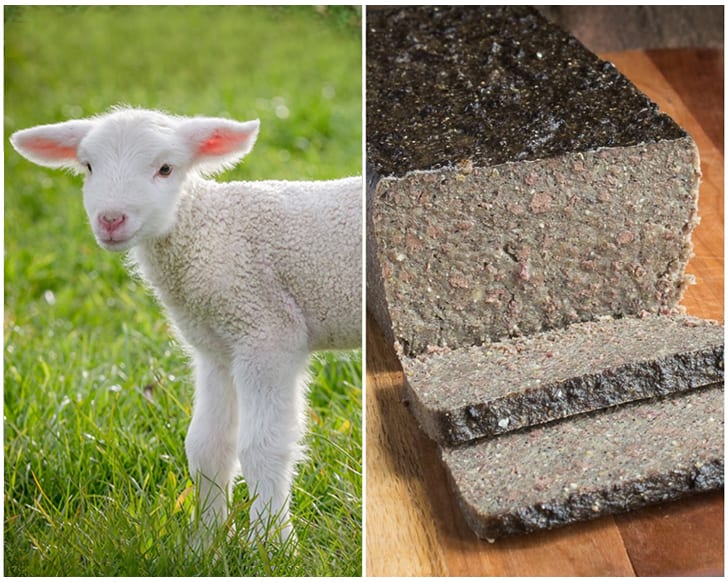
We're lucky enough to live at a time in which we're not forced to eat every little bit out of every animal we get. But before the days of mass meat production, wasting any little bit of meat was considered a sin! It was a natural consequence of widespread poverty and hunger.
Hence came the scrapple, the magical mushy dish that ensured pig's eyes, snouts, or brains would never go to waste. To make this "delicious" resource-saver, American colonialists added cornmeal and wheat flour to the scraps, making for the scrapple's meatloaf-resembling, bread-like shape.
Eel Pie
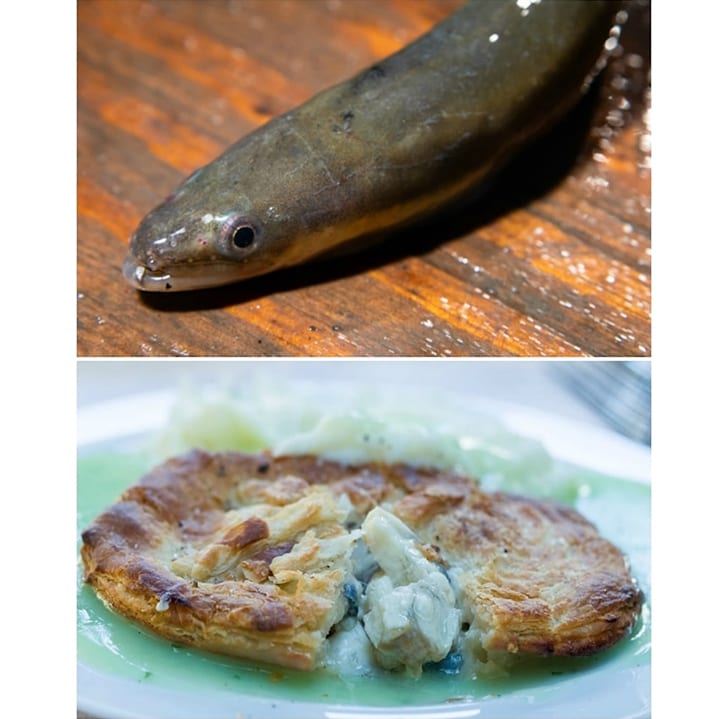
To say that eel pie is not as famous today as it was back in the colonial period is an understatement. Right now, the idea of eating eels is enough to make some stomachs turn. But in the early 16th century, the eel pie was considered a top-notch delicacy by countless Europeans and American colonialists.
The eel pie is still sold as a dish in many restaurants, particularly in the United Kingdom. And to be fair, eels are said to actually taste pretty good. They're compared to the sea bass and said to have no fishy aftertaste. Still, it's not the type of ingredient we'd want in a pie!
Lobsters
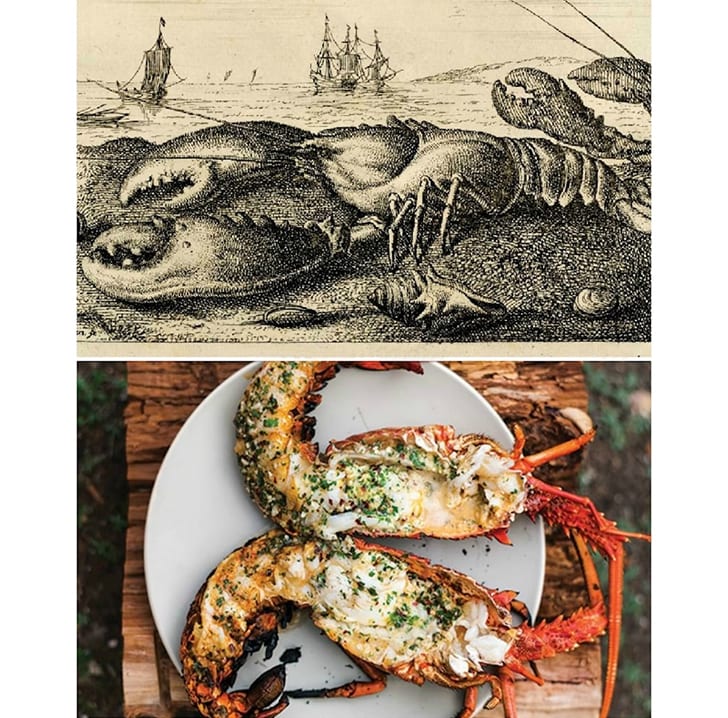
Now we're talking! Here we were thinking that the 16th-century colonialists were starving and eating nothing but gross food, and they were actually banqueting some delicious lobster. But how was this even possible? The explanation is mainly cultural.
Before the lobster was turned into the most expensive dish on most of the world's menus, it was actually considered a poor man's food. Unbelievably enough, fishermen used it as bait to catch eels! Fortunately, we've set our culinary priorities straight in the last couple of centuries, and delicious lobsters are now getting the praise they've always deserved.
Ketchup
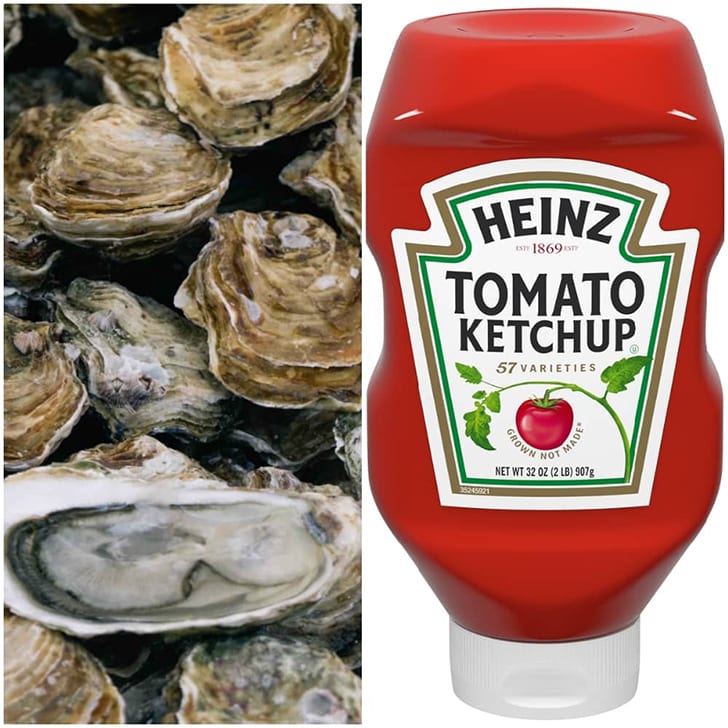
Back in the day, the people of the colonial period liked to season their food with ketchup. Confused? Ketchup was the old-time equivalent of the awesome tomato-based sauce we love to cover our french fries with today. But for what it's worth, it wasn't anything like ketchup.
The ketchup we are talking about was made out of walnuts, anchovies, oysters, or mushrooms. Reportedly, the Americans of the 18th century believed tomatoes were poisonous, ignoring that every ingredient in their ketchup sauce was far more hazardous than the delicious sour red fruit.
Apple Pie
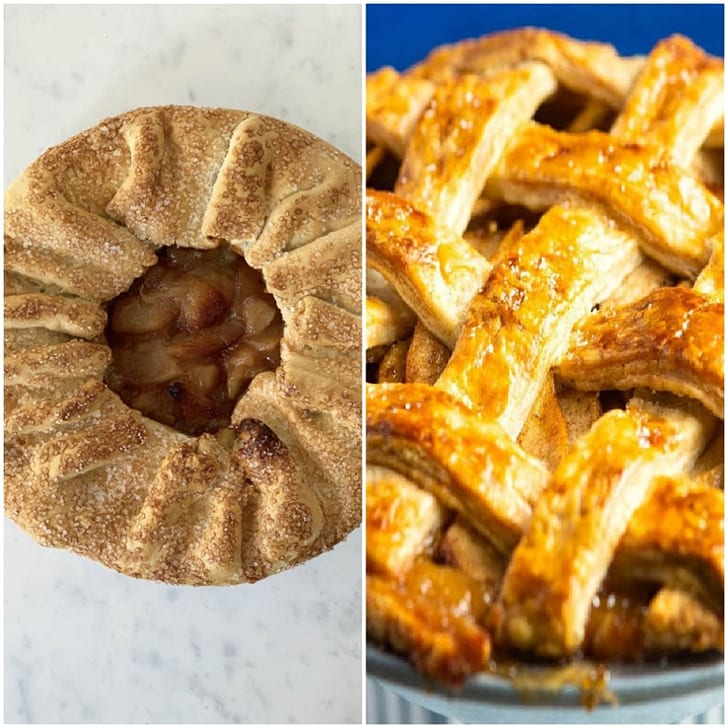
In our electrically-wired world, filled with comforts, safety, and technology, there's still a lot of joy to be found in a delicious slice of apple pie. With this in mind, we can only imagine how much the old colonialists loved this ever-tasty recipe.
A classic dessert that's often seen as a true American symbol, the apple pie was a menu favorite even before the United States became a country. Its eternal charm has remained so beloved that the words 'apple pie' is now being used to describe extremely beautiful people. We couldn't agree more with the metaphor!
Clabber
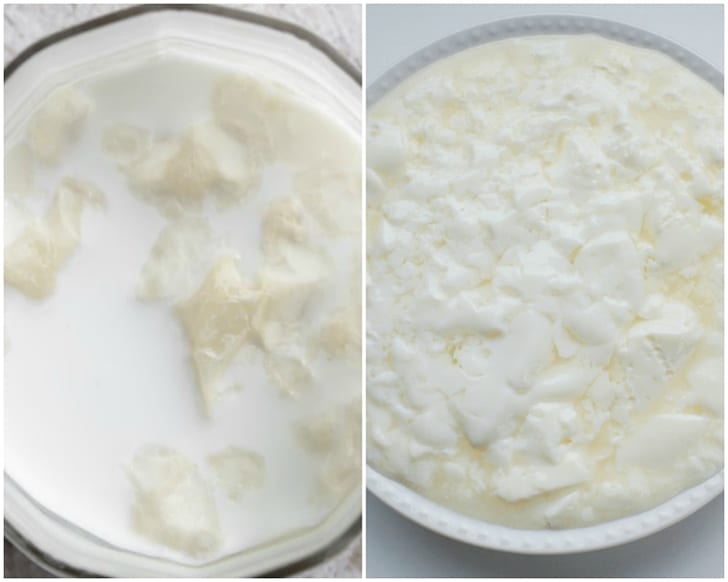
Clabber is yesteryear's yogurt, and it's actually pretty tasty. We wouldn't trade one of our present-day yogurts for a bucket of this sour-flavored food, but we wouldn't mind taking a bite or two out of this popular colonial-time dish.
Clabber is basically unpasteurized milk that turned sour over time. It goes through a fermentation process until it obtains its characteristic and yogurt-like thick texture and intense flavor. To make this delicacy even tastier, inventive colonialists added spices like cinnamon, pepper, and nutmeg. We ought to try it someday, alongside our present-day yogurt for comparison.
Ice Cream... With Funky Flavors
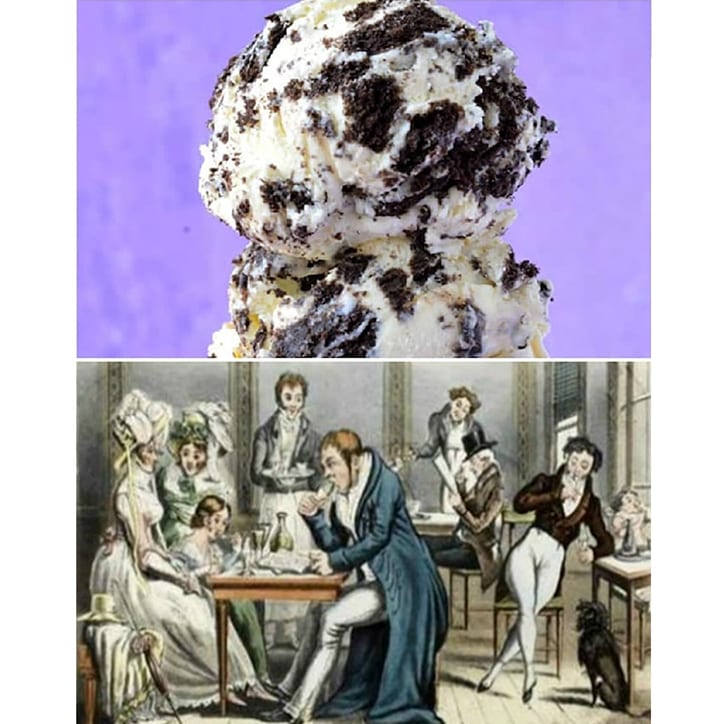
Delicious ice cream from the 18th century? It looks like the colonial times weren't so bad! After all, how bad can things really be when you get to eat ice cream for dessert? Well, the ice cream of our ancestors wasn't anything like the ice creams we have today...
First invented in France and made available to the public in 1660, ice cream was still a relatively new and exciting invention during colonial times. And as a result, many people got it completely wrong: Some of the odd flavors added to ice creams back in the day included asparagus and even eels. Yuck!
Swan Meat
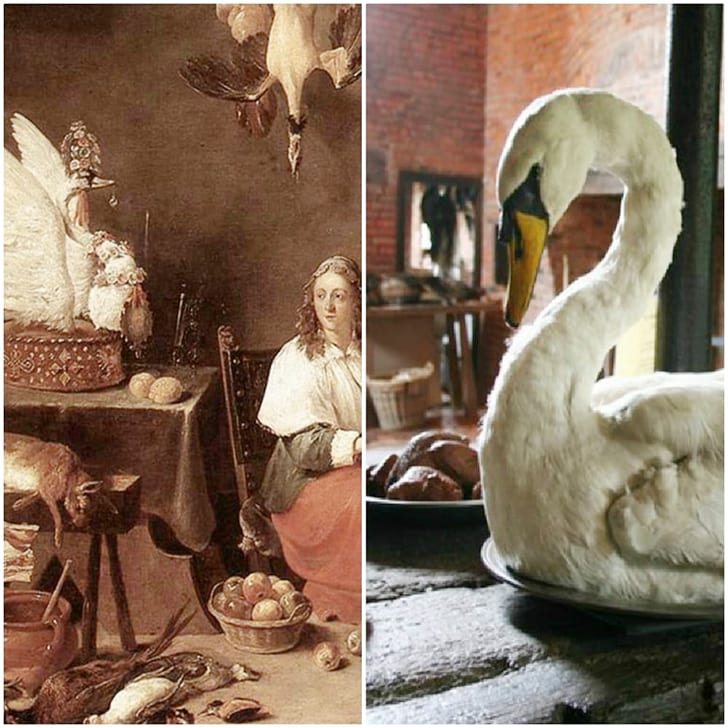
The golden rule of colonial America seems to be pretty straightforward: If it's got meat on it, you better eat it! It was a natural consequence of living in austere, hunger-filled times with few of the extraordinary social perks we're so lucky to enjoy today.
Not even the magnificent swan resisted the colonialists' meat-eating habits. This majestic bird is celebrated in a prominent Russian ballet for a good reason—it was gifted with natural beauty and grace that finds no match in the wild. But the colonialists weren't shy of doing something ugly to something so beautiful, and these poor birds often ended up in stews.
Pigeons
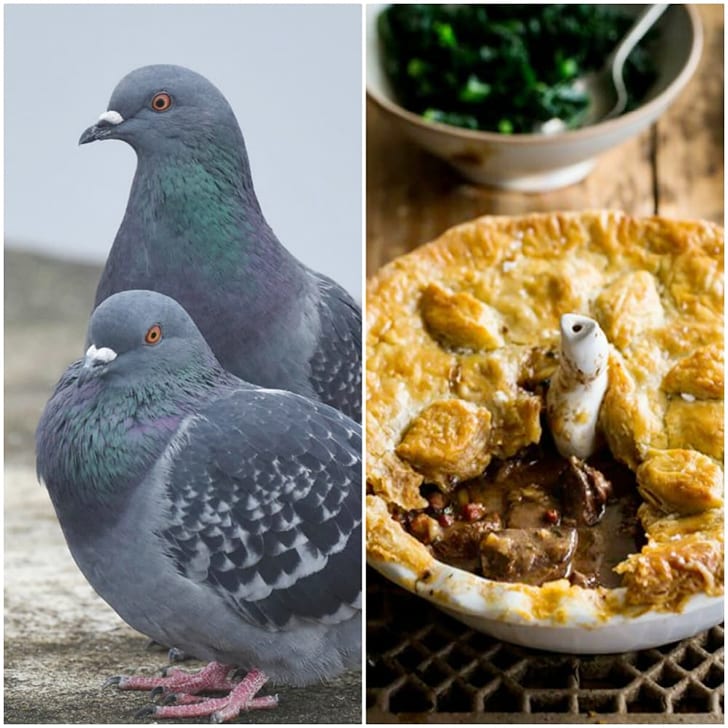
Besides being nature's fast-mailing system, pigeons are also a delicacy in many countries, including England, Ireland, and France. Needless to say, they were also commonly eaten in colonial times, even though pigeons are considered to be a hard-to-cook dish.
Not the meatiest of all animals, the pigeon has tough meat, especially if it has lived for a long time in the wild. But if you happen to own pigeons and cook them while they're still young, their meat will be very tender and delicious. Some pigeons are still consumed today, but most get to live happily and freely in our modern-day cities.
Posset
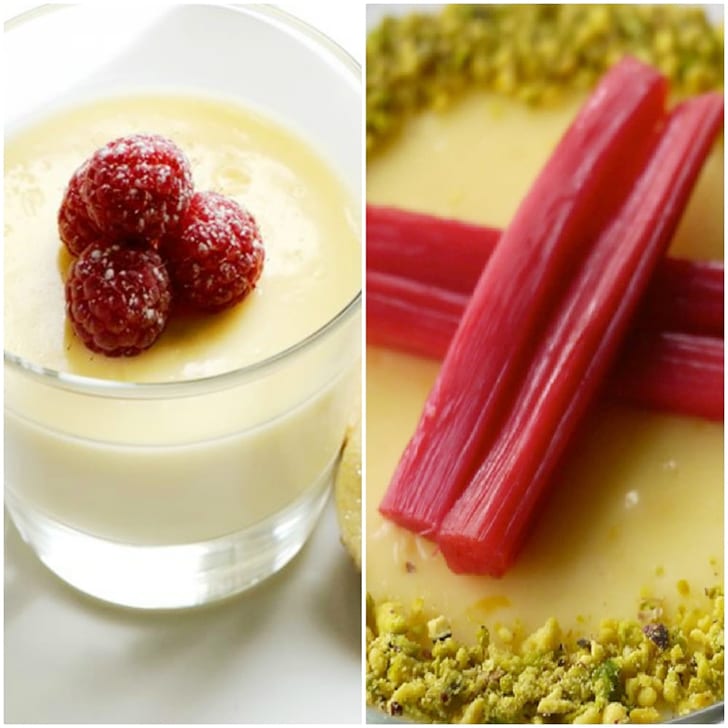
During colonial times, simplicity was a must when it came to food. And out of all the desserts out there, is there any that's simpler than the posset? This type of custard is typically comprised of just three ingredients: cream, sugar, and whatever flavoring you'd like.
In a period as complicated as the early 16th to mid 17th century, people had enough on their plate (pun intended) to worry about cooking complex and ingredient-heavy desserts. That probably explains the popularity of the deliciously simple posset, which can be served either as a hot milk drink or as a spoon-ready cup dessert.
Tripe
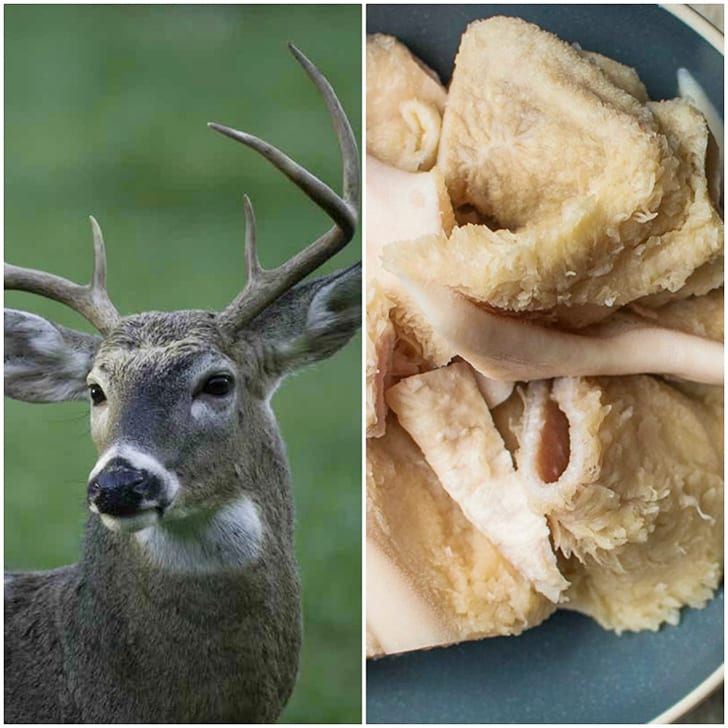
Tripe is nothing but a type of edible lining from the stomachs of animals such as sheep and cattle. And while the idea of eating this part can be intimidating today, the centuries-old influence of tripe on the diet of our ancestors is just too significant to ignore.
Consumed heavily in colonial America, tripe-based dishes are present in countless cultures, from the French andouille to the Puerto-Rican cuajito; from the Portuguese dobrada to the South-African mala mogudu. Tripe is very nutritious, containing high levels of vitamin B12, zinc, and selenium.
Hasty Pudding
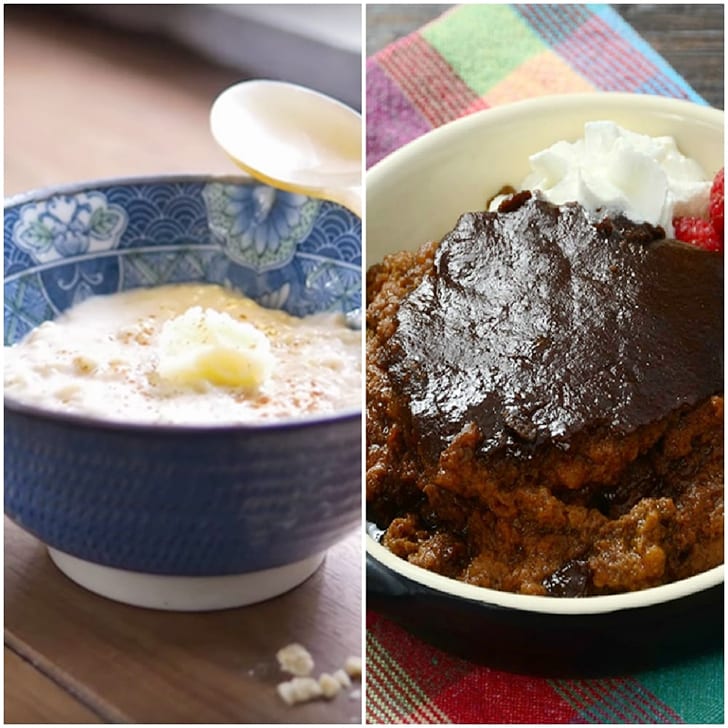
A basic recipe of grains cooked in milk or water to make a porridge, the hasty pudding doesn't sound like much. Yet, this utterly simple recipe was so widely beloved during the 18th century it even found its way into the lyrics of a popular wartime tune known as the "Yankee Doodle."
As the state anthem of today's Connecticut, "Yankee Doodle" uses the hasty pudding as a metaphor for the "thickness" of the time's men and boys. The lyrics tell the story of a Father and child who went camping together with Captain Gooding and witnessed men and boys as thick as hasty pudding.
Biscuits and Gravy
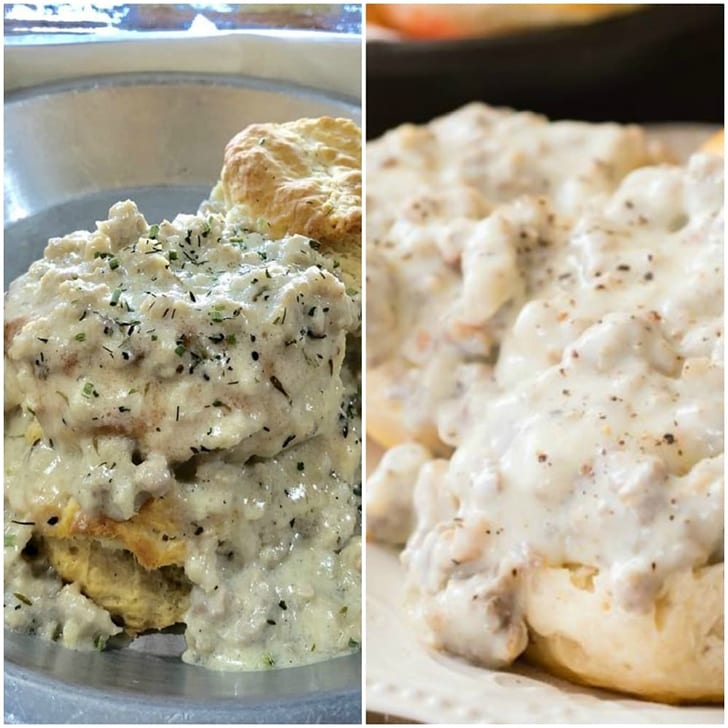
When a food dish resists the test of time this finely, you know it's got to be special! Eaten long after the colonial period was over, biscuits and gravy have continued to be a popular Southern recipe in the United States, even though the dish was first invented during the hard times of the American Revolutionary War.
Biscuits and gravy are nothing but dough biscuits covered in meat gravy or sawmill and often flavored with black pepper. But perfection can be found in the simplest things, just like how the all-American biscuits and gravy dish has continued to show over the years.
Snake Stew
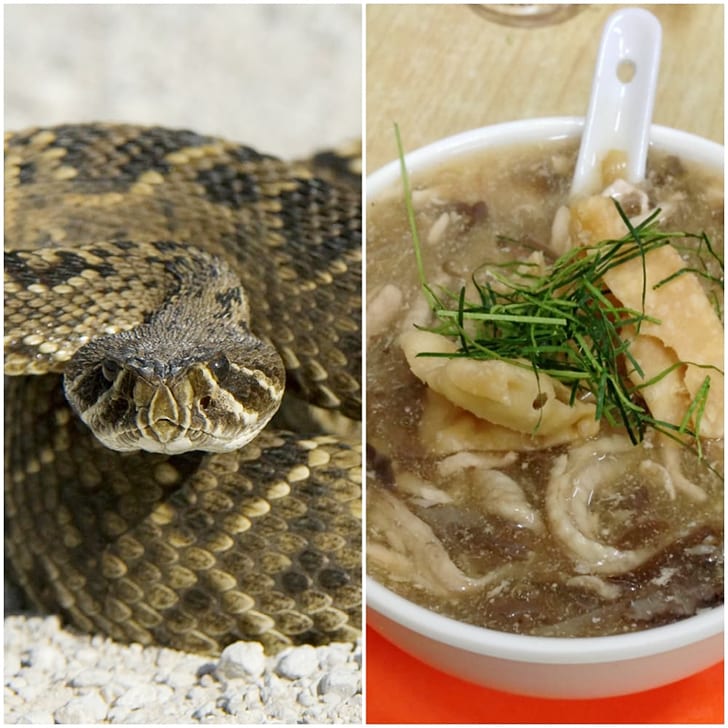
Can you imagine spending weeks in the desert with little to no food? That's when you start reconsidering something like... eating a snake. It sounds scary because snakes are scary, but looking at the final result, we think it actually looks pretty tasty.
In the hungry days of colonial America, everything with some meat on should be considered food. Sadly, though, snake meat is said to be basically tasteless, sinewy, and full of little, uncomfortable bones. That's probably why the old American colonialists decided to make a stew out of the crawling reptile.
Tea
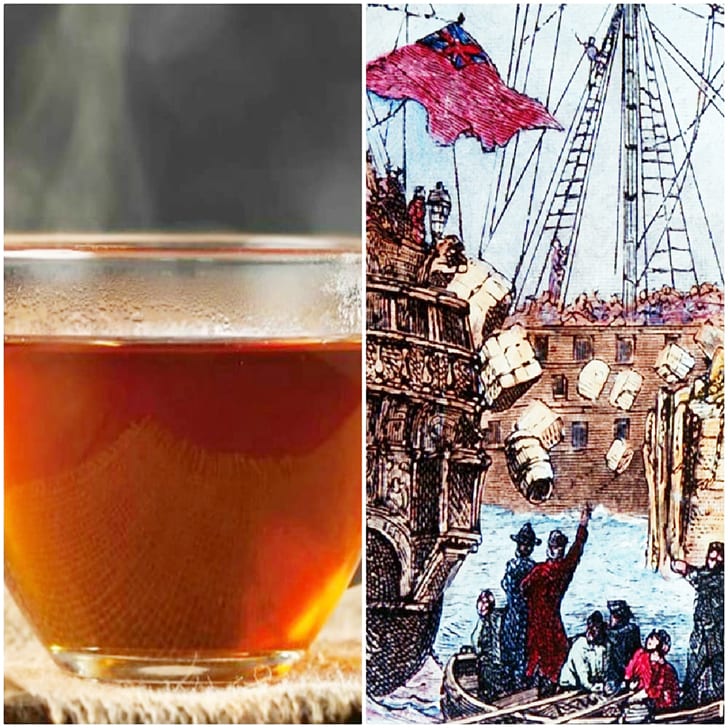
Remember the thing that started an entire revolution and ended up building the basis for the foundation of the world's biggest superpower? That's right, colonial period Americans' love for tea could only be matched by their historically relevant hate for tea taxes. And surprisingly enough, both feelings ended up escalating into the Boston Tea Party and subsequent American Revolution.
Tea is still consumed today, but back in the 17th and 18th centuries, it was at the center of social life, especially in the tea-obsessed countries of the former British Empire. Considering its ever-lasting influence, do we really need to stress how much colonial-time Americans loved this hot beverage?
Humble Pie
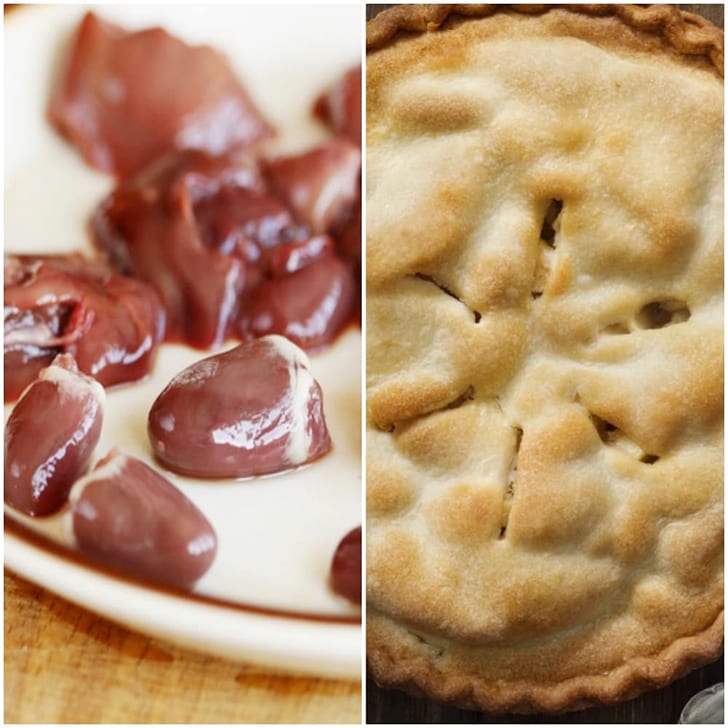
Humble pie was such a poor man's food that the expression 'to eat humble pie' is still used to refer to humiliating or degrading situations. But even though the colonial period humble pie wasn't an upper-class favorite, it satisfied hungry stomachs just like any other nutritious food.
Like many things in those days, humble pie was mostly made out of animal insides like hearts, livers, and kidneys. The most impressive thing is that the humble pie is so old (dating back to medieval European times) that it was an ancient dish even by 17th-century terms.
Turtle Soup
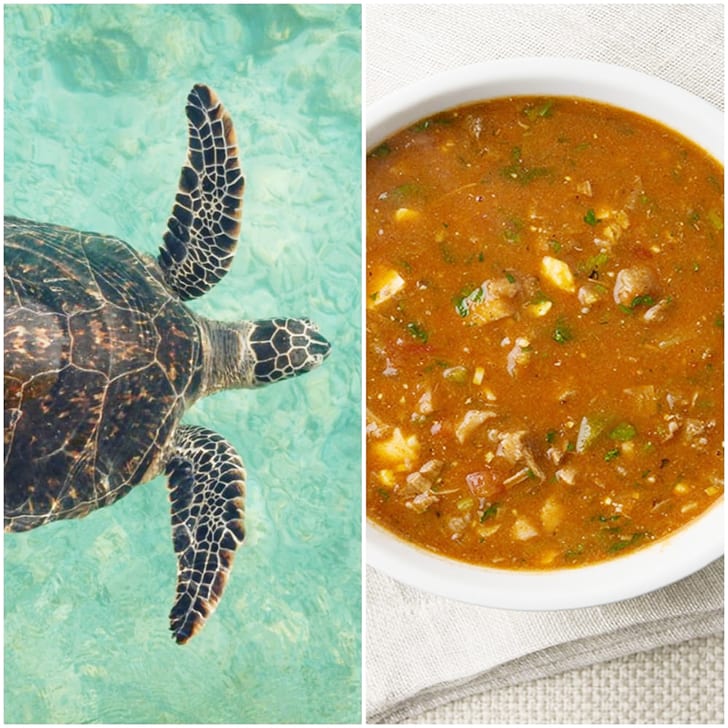
There's something awfully wrong about killing and eating an animal that's supposed to live an average of 50 years and can live up to 100. We're talking about turtles, and some can even live up to 200 years, depending on the species!
In 18th century America, turtle soup was considered a delicacy and served in high-society, upper-class banquets. This dish was still being consumed in snobby dinners during the early 20th century but has since virtually disappeared. We do think an animal as majestic as the turtle deserves not to be part of the human menu no matter how tasty that soup looks.
Cornbread
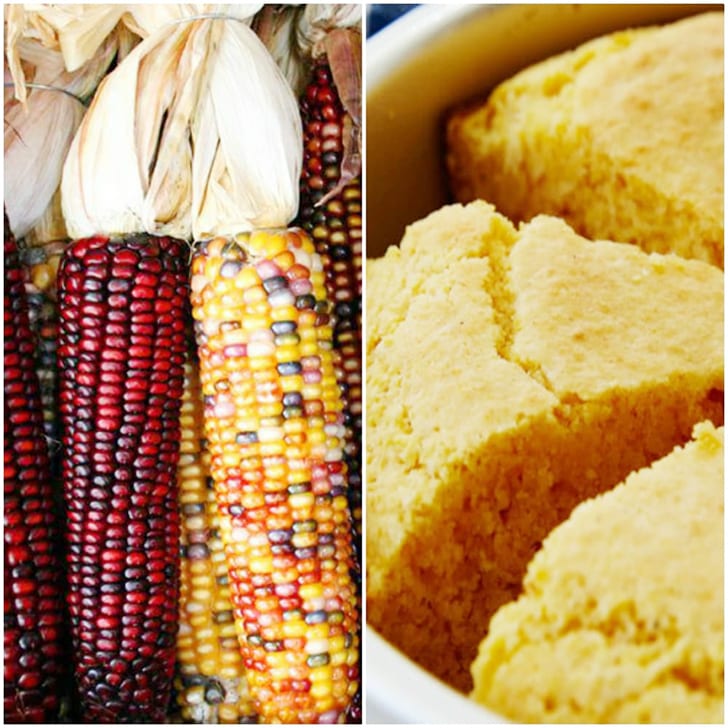
If the soils of America could speak, they would probably mumble the word 'corn.' After all, corn is such an integral part of the country, before and after its foundation. It's almost impossible to revisit the American continent's history without having this flexible, nutritious, and delicious food in mind.
Hundreds of years before corn syrup put the American food industry on the world map, Native Americans already used cornmeal to make cornbread. It was and still is a bonafide American classic. No offense to the bald eagle, but corn may be the ultimate U.S. symbol!
Chitterlings
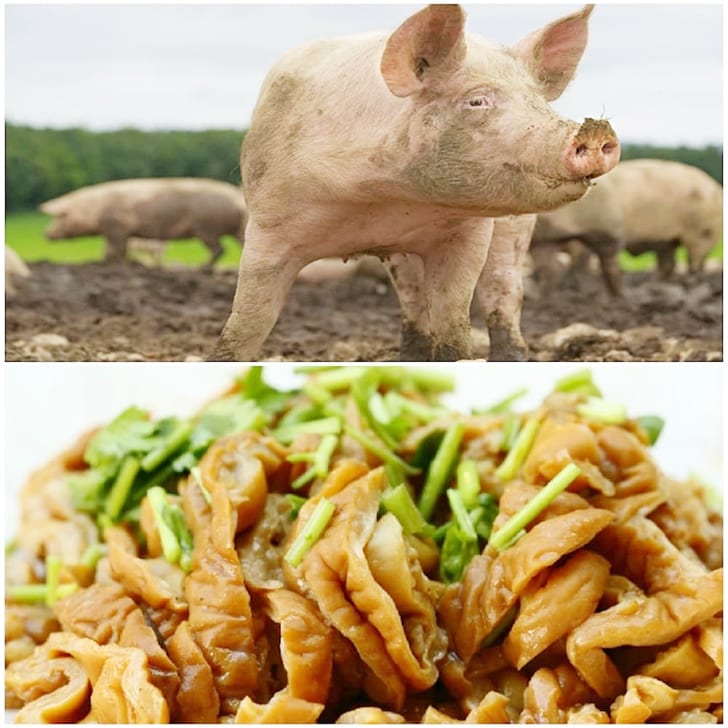
We've grown so spoiled and picky as a society that most of us now find the idea of eating pigs' intestines despicable. But chitterlings, which is a food made mostly out of this ingredient, is reportedly a tasty dish that's guaranteed to satisfy any hungry stomach and that's still highly consumed today.
We guess the trick is to not think of intestines while eating this fried/boiled recipe. And if that seems like an impossible task today, make no mistake—the old American colonialists didn't mind it at all! They knew exactly how to make the most out of every bit of the pig, intestines included.
Ash Bread
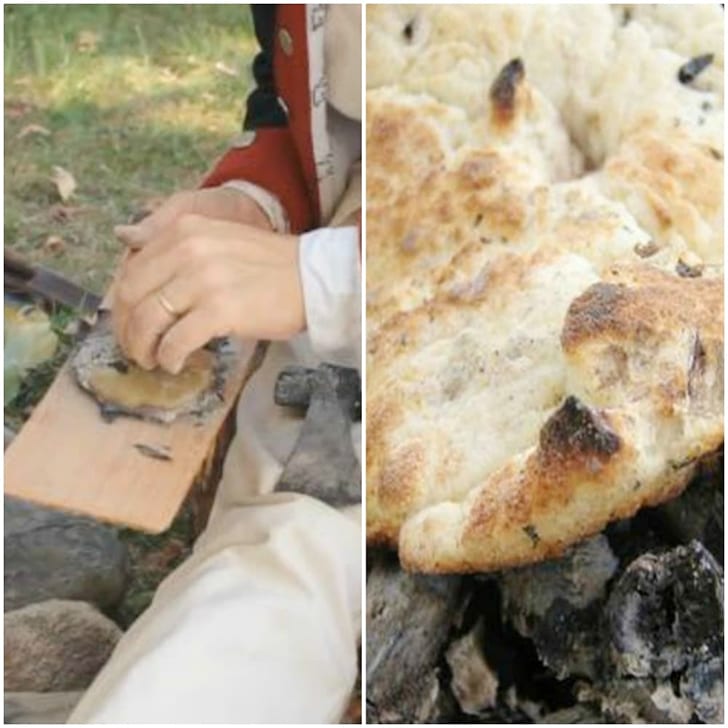
So far, we've talked a lot about colonial times' food without ever mentioning the big elephant in the room. But sadly, yesterday's America was tainted by the cruelty of slavery. And as you can imagine, a slave's diet was hardly as complete as the still-scarce diet of a free man.
One of the things slaves most commonly ate was ash bread, a relatively popular outdoor's recipe that's basically corn-based bread cooked on top of a pile of ashes. Not the most dignified meal in the world, ash bread is yet another reminder of just how cruel life was to the non-white people of America.
Bear Fat
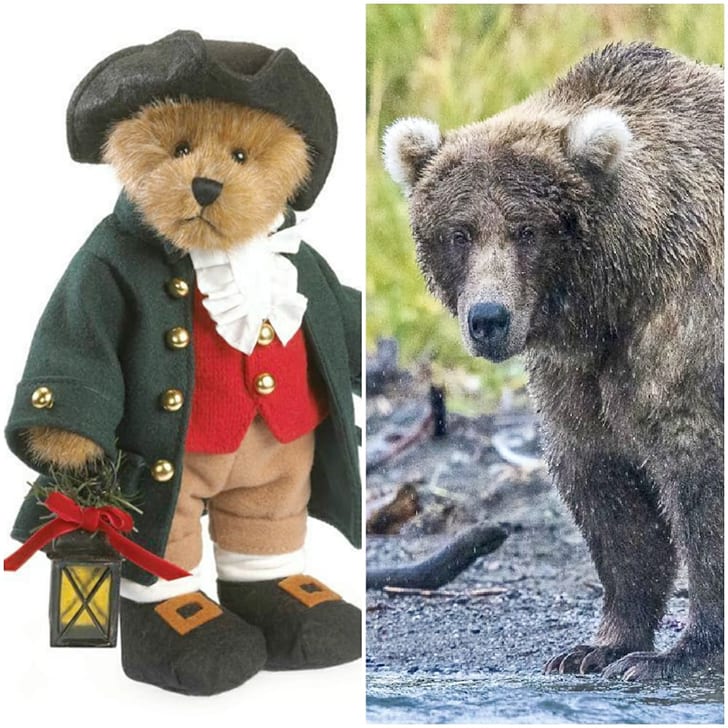
Bear meat was never a popular type of food. Besides the apparent complications associated with hunting bears, bear meat is filled with parasites and can cause trichinosis when consumed undercooked. But in colonial times, bear fat was seen as a perfect substitute for pork fat.
In fact, bear fat is still used today, and it's supposedly perfect for frying. Additionally, it can be conserved for more extended periods than pork fat. Finally, one single bear can make for tons of fat, especially since the fat in bears can be up to 10-inches thick!
Mutton
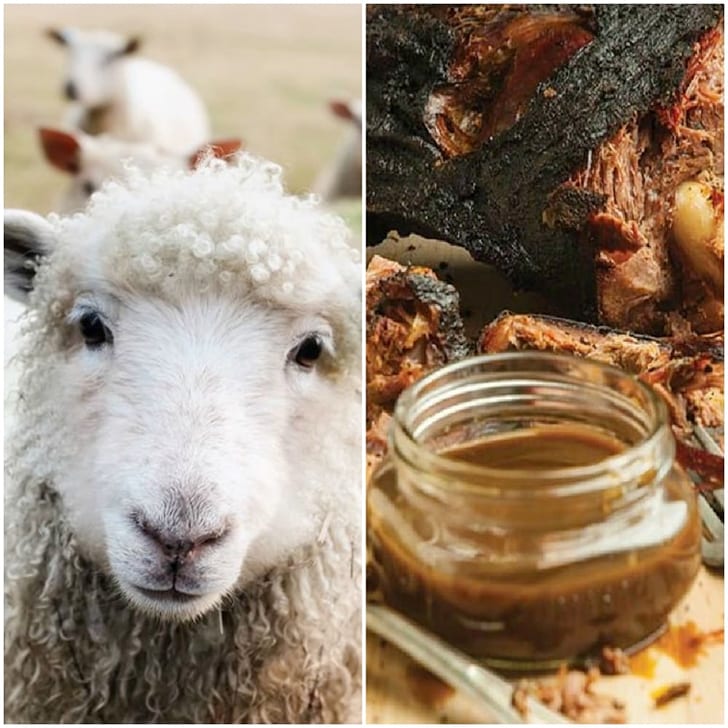
Sheep are adorable, but the people of colonial America loved to have them around for reasons that had nothing to do with their natural charm. The thing they wanted the most was their wool, a thick enough material to make you and your family survive even the coldest winter.
But once a sheep was done with giving you wool, what was left to take? The meat, of course. Mutton is the name given to the meat of sheep that are over one year of age, and this nutritious food is still popular today.
Pokeweed
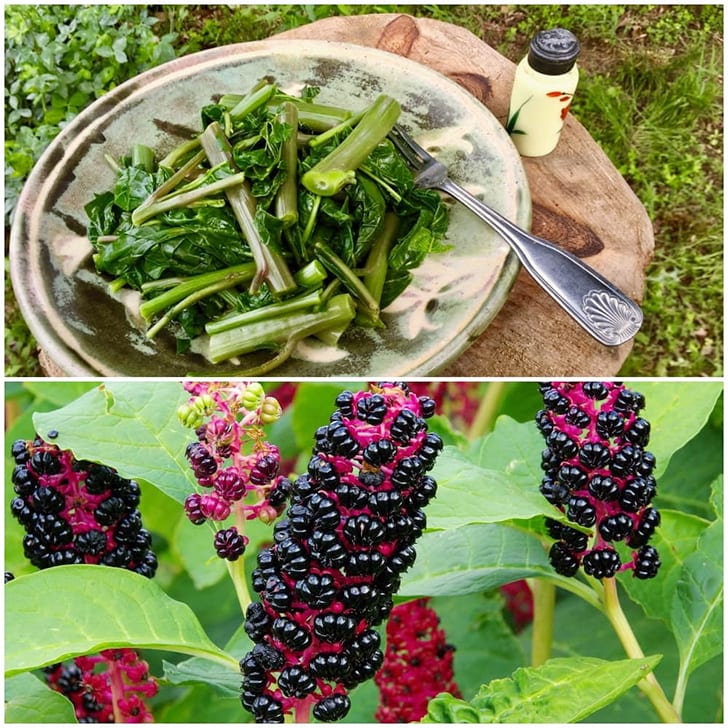
In colonial times, life was so hard you were often obliged to make the most out of what you can find. And such included pokeweed, the highly-venomous plant that the Appalachians still dared to cook and eat. But don't worry, because these ancient and wise people knew how to cook these deadly beauties precisely.
Pokeweed needed to be boiled at least two times, with the boiling water replaced each time. In the end, the pokeweed's venomous attributes were gone, making for delicious food that has a similar taste to spinach and asparagus.
Feet Jelly
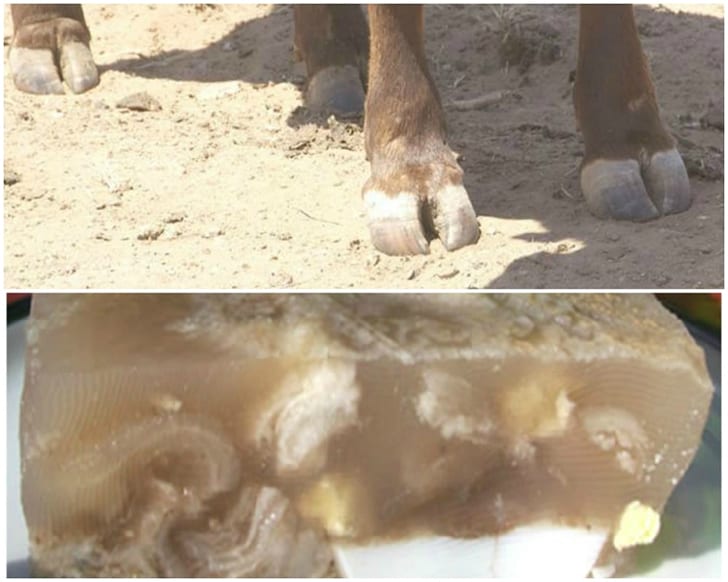
Feet have no cooking potential, right? Wrong! In fact, calves' feet are extremely rich in collagen, a connective tissue protein that's perfect for making jelly. Yes, most jelly is animal-based, even though it looks like the most innocent, cruelty-free dessert we can get nowadays.
In colonial times, feet jelly (coming mostly from calves) was a favorite dessert. Feet jelly references are pervasive throughout epoch literature, even though jelly is considered a sugary treat with little nutritional value. The most impressive thing? Feet jelly is still highly consumed today, even though people seldom think of feet while eating it...
Pease Pudding
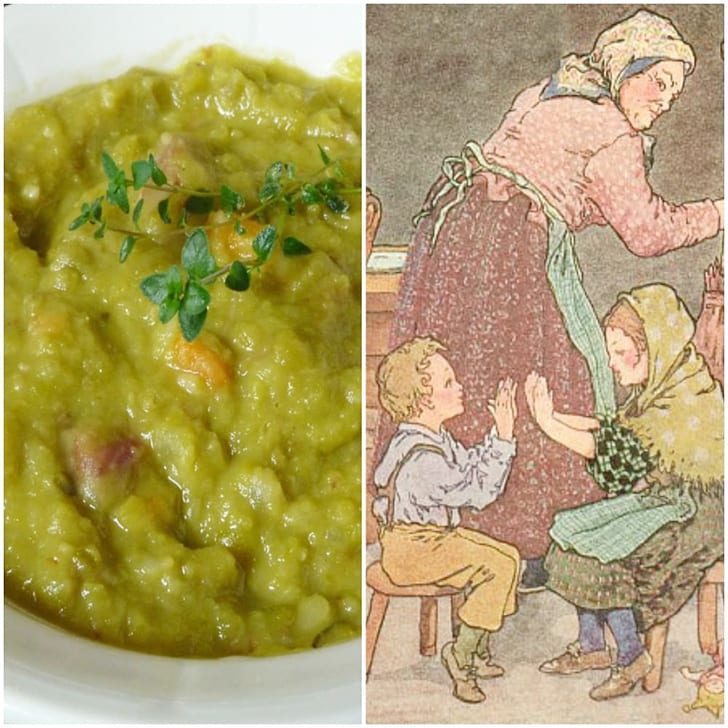
If you try to give pease pudding to a 10-year-old today, you will probably hear loud moans of discontentment. But back when kids didn't even know Happy Meals were going to exist, this legume-based dish was a delicious belly warmer every little boy and girl ate to the last bit.
Made from boiled legumes, yellow peas, and bacon or ham joint, this American and English classic is one of the healthiest dishes on our list, and it's perfect to get you through a long day of work. Believe us, the people of colonial America really needed all that energy!
Raccoon Meat
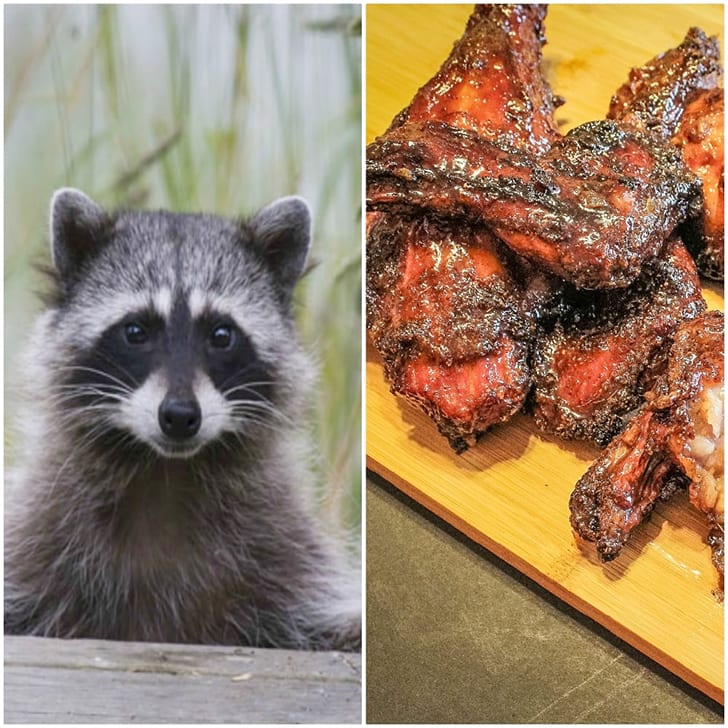
Being nature's little robber, the raccoon is an animal with a bad rep in America. Due to its habit of entering people's homes, the raccoon is seen as a plague that must be contained and as an animal whose presence is wholly unwanted. But are we simply paying the price?
In colonial-time America, the poor raccoon was less of a nuisance and more of a delicious dish. Their meat can be described as a darker type of chicken meat, and these poor animals often ended up being roasted by hungry colonialists.
Chicken Livers
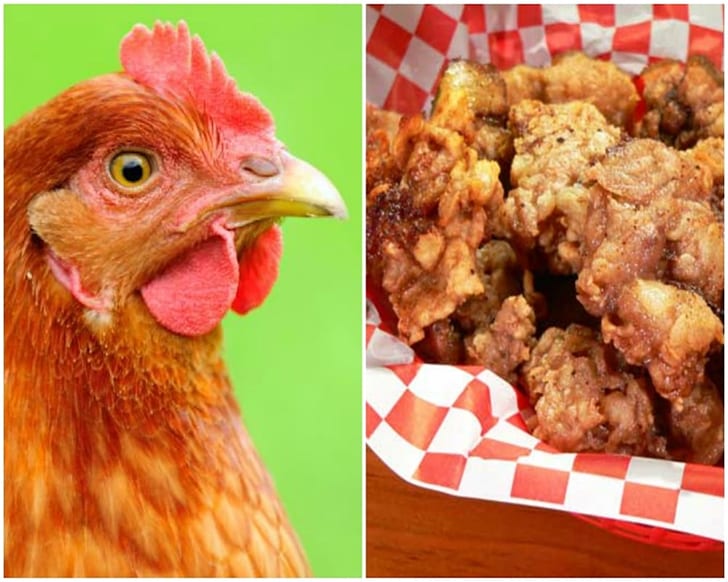
Even the die-hard vegans have to agree on one thing: Chicken is absolutely delicious. There are over 23 billion chickens in the world today, and most of these poor birds will end up being served as food in restaurants or sold as meat in big chain stores.
In the America of 300 years ago, many things were different. But our love for the chicken was pretty much the same. Sure, KFC was still a distant and inconceivable reality, but the old colonialists already knew that frying chicken could make for something delicious. And they went even further by eating fried chicken livers served with onions and mushrooms!
Lemon Syllabub
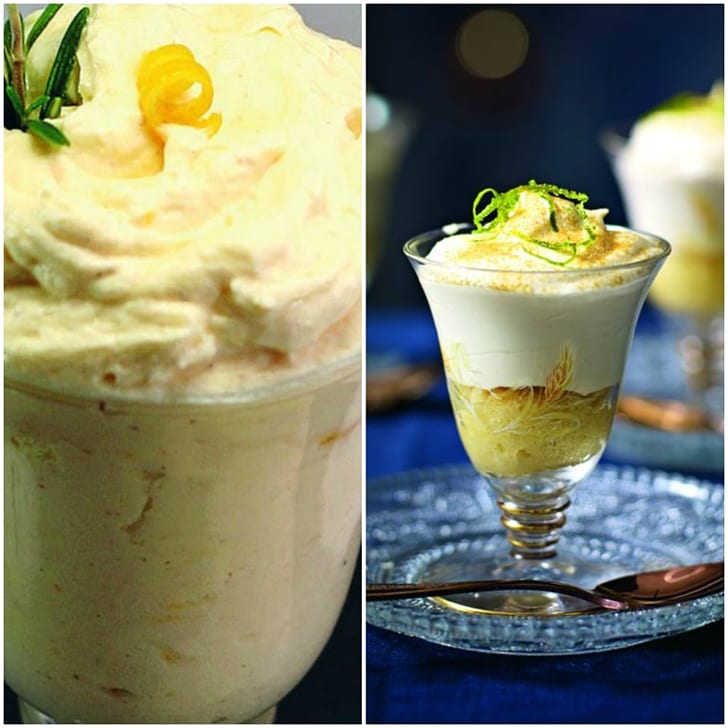
Few things in life can put a smile on your face the same way delicious desserts do. And if that's true now, when we get to live in such a comfortable manner, we can only imagine the happiness that delicious sweets must've inflicted on our ancestors from those days.
One of such desserts was the tasty lemon syllabub, a dish that's still consumed today and that looks so lip-smackingly delicious. Syllabub recipes vary greatly, but the main ingredients may include whipping cream, sugar, white wine, lemon juice, and berries (served as an extra).
Moose Nose Jelly
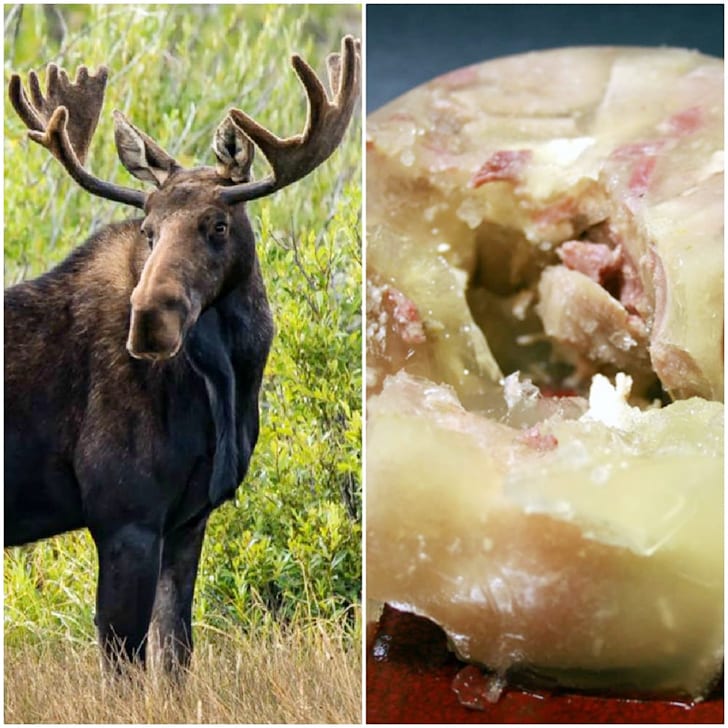
Our once-innocent perception of jelly is quickly changing. If feet jelly wasn't enough of a no-no for you, allow us to introduce you to yet another colonial period delicacy that's bound to inspire some queasiness—moose nose jelly!
Yes, many years before becoming a bonafide Canadian symbol, the moose was being hunted for jelly. We guess that's the price you pay for having such a characteristic big nose. Still, we can't help but feel kind of sad for the poor moose, which is known to be a human-friendly (if not provoked) and generally peaceful animal.
Tongues
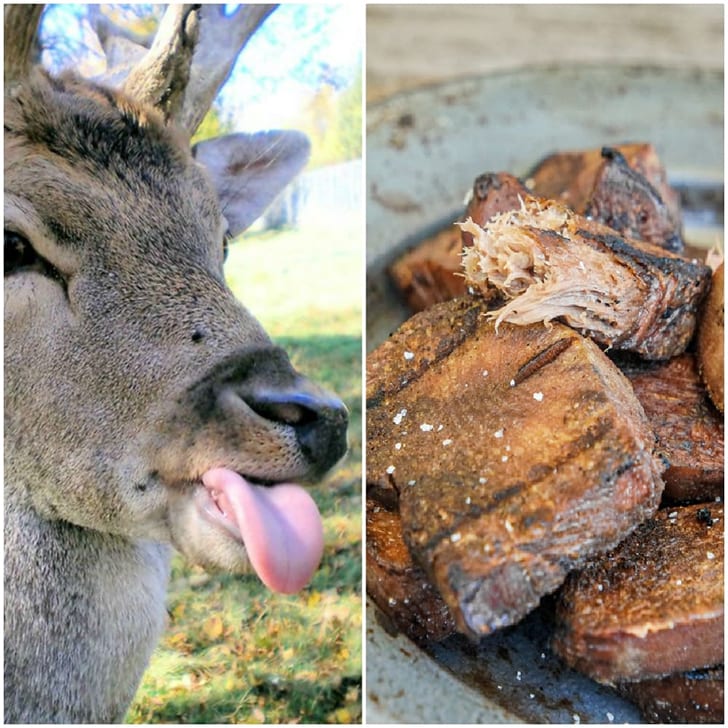
The tongue is one of the five strongest muscles in the human body, and you don't even need to be a chatter to feel proud of your powerful tongue. But in the 17th to 18th century, animal tongues were a culinary treat that was so tasty it was able to shut even the loudest mouths!
A chewy type of meat for the old colonialists to devour in silence, the tongue needs to be cooked or boiled for hours to get tender. But once it does, it can make for a delicate dish just as savory as any other type of meat-based food.
Pepper Cake
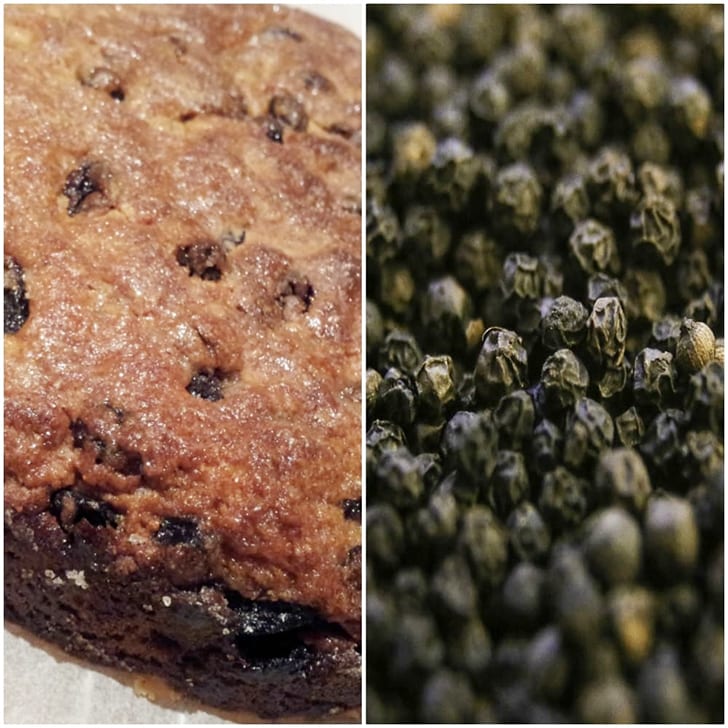
We've grown so accustomed to all kinds of exacerbated flavors in today's world that we probably don't think much of the pepper cake. But back in the 18th century, bland food was the norm, and spices like pepper were costly and relatively rare.
With this in mind, it's no wonder the pepper cake was such a favorite among the American colonialists. Besides being a treat for their poorly accustomed palates, it could last for months if stored at the proper temperature. Either way, this type of cake is still cooked today as a simple and easy to make seven-ingredients recipe.
Squirrel Meat
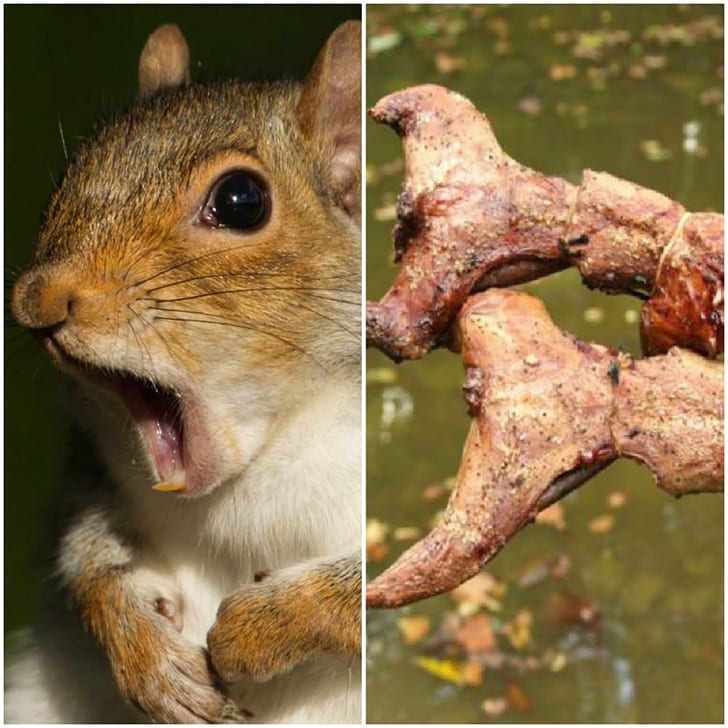
Before the America of big portion sizes, hunger was quite common. Sadly, people often found themselves with nothing to eat. So, they turned their attention to the animals around them, regardless of size or nature.
, we tend to pass on the opportunity of eating rodents, such as rats and... squirrels. But back in 17th-century America, no squirrel was safe in the wild. These tiny creatures often ended up in pies, stews, or skewers, satisfying the hungry bellies of those who really needed it. It's impressive how people back then were able to catch these stealthy creatures.
Porridge
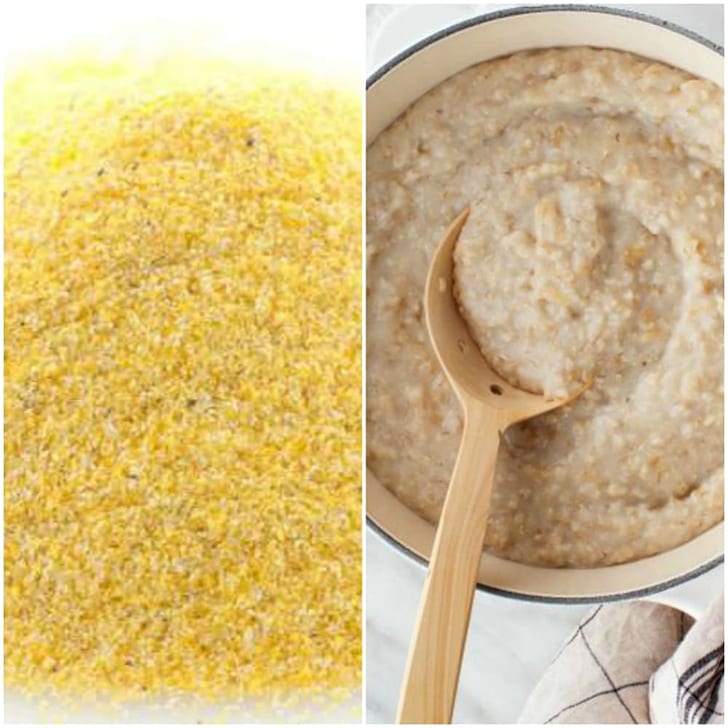
Cereals for breakfast are not a 20th-century invention but rather an ancient and traditional custom. Oatmeal is just one of the many types of porridge people used to have during colonial times in America, and we can understand why.
Mostly made out of mashed cereals and milk or even water, porridge was a simple, easy to find, and very nutritious food that must've satisfied millions of hungry American mouths during the 17th to 18th century. You can mix almost anything with porridge, from butter and walnuts to sugar and cinnamon.
Partridge Meat
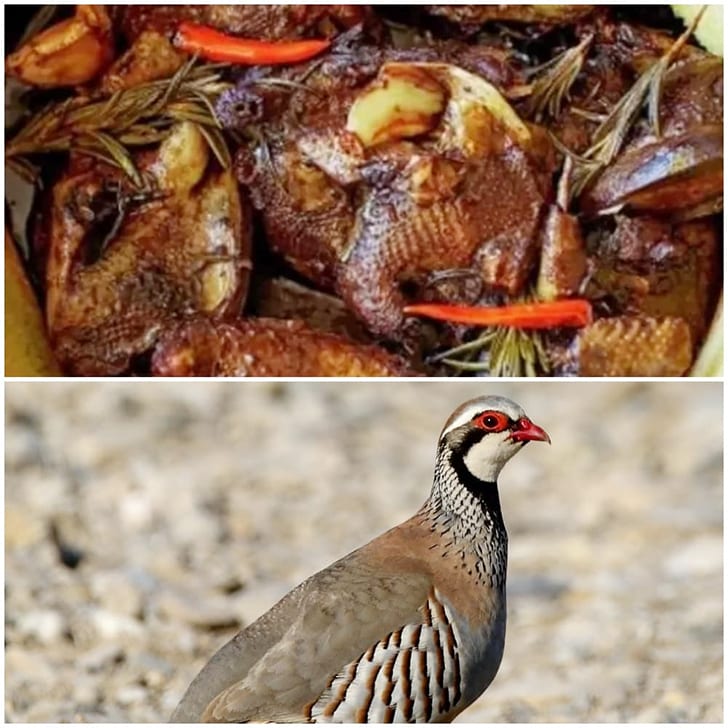
A non-migratory bird that can be commonly found in at least three continents, the partridge can hardly be called the ideal type of food. But in colonial times, partridges made for a ubiquitous meat-based dish with a high nutritional value.
Still consumed today, partridge meat is reportedly very delicious. According to BBC Food, it must be grilled or roasted with simplicity, and it's best served next to roasted vegetables or french fries. This implies that the partridge meat is tasty enough to make for a fine cuisine delicacy on its own.
Opossum Meat
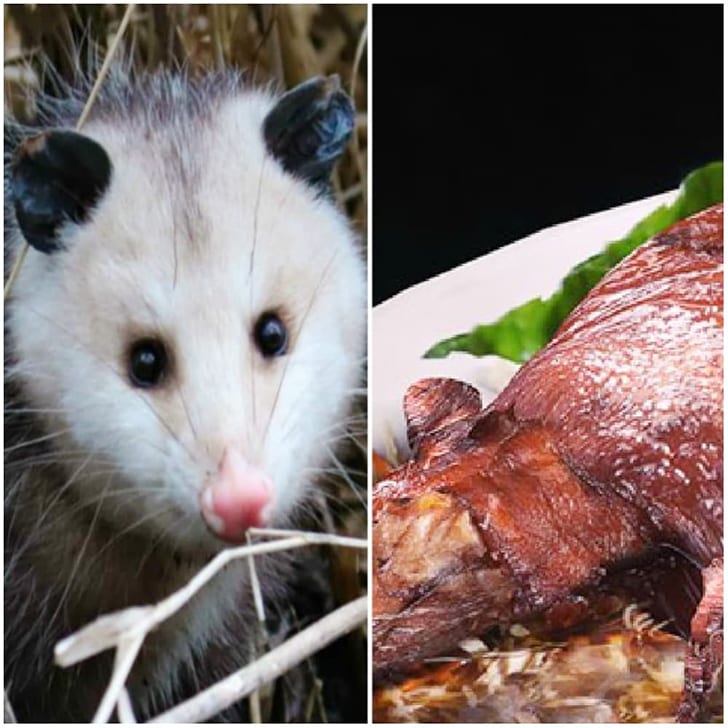
Originally endemic to South America, the opossum traveled to the North to find a better life in the land of plenty. But unlike so many European immigrants, the little marsupial may have ended up regretting its decision. Because in the 18th century, opossums were commonly hunted and eaten by starving colonialists.
Opossum meat reportedly tastes like mini lamb shanks, which doesn't sound bad at all! But these tiny cute animals, which are distant relatives of the kangaroo, are probably better off now, living peacefully in the wild without having to worry always about being captured by humans.
Molasses
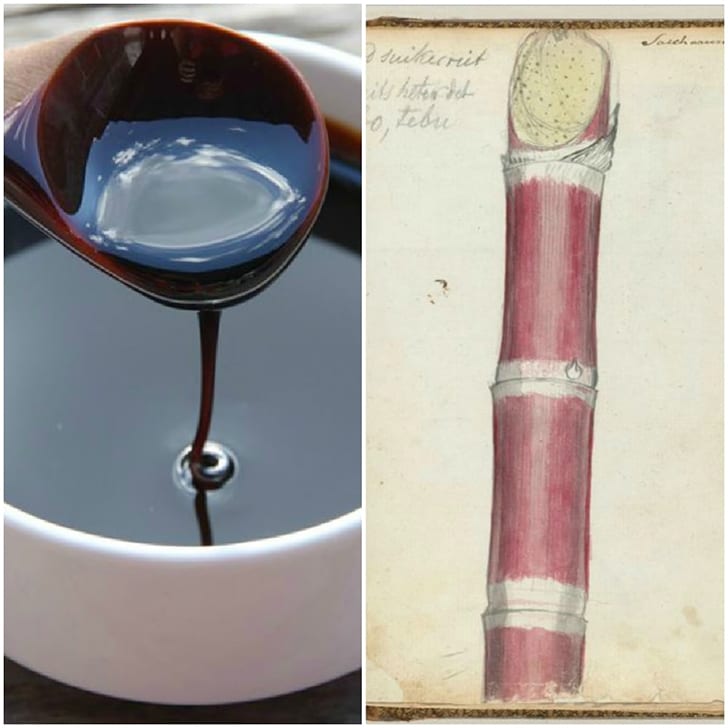
In the exciting world of food syrups, molasses is king. This viscous product results from the refining of sugar beets, and it's the thickest, most violently sweet, strong-flavored syrup out there. Its name comes from the Portuguese word 'melaço,' and the syrup was commonly added to rum during colonial times.
Uses of molasses vary extensively, and the rich syrup even has some industrial and horticultural uses today! It's a component of mortar for brickwork, and it was utilized in some of the early versions of the printing press. It can also be added to the soil for increased microbial activity.
Sturgeon
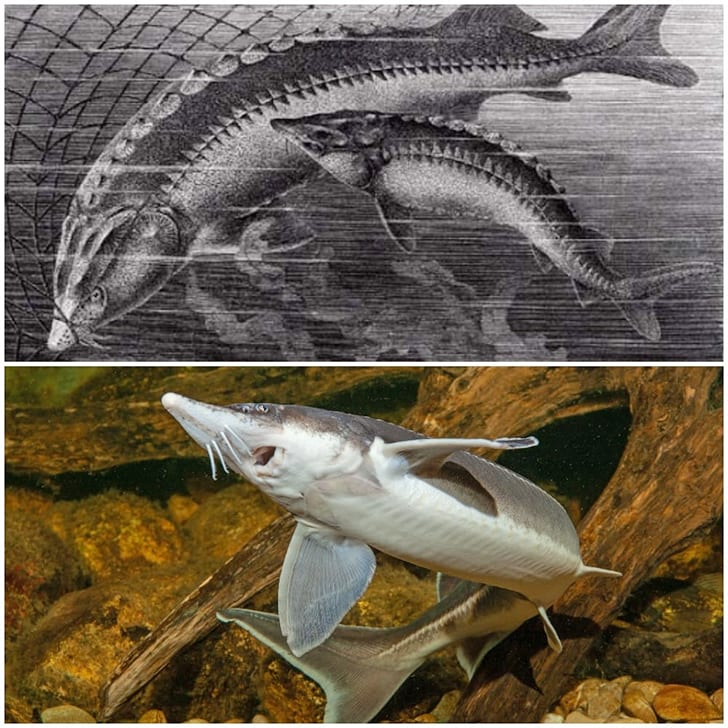
Sturgeon is hardly the number one fish in most American menus today. But some centuries ago, the Americans ate so much sturgeon they have driven some species to extinction or near-extinction.
A colonial time favorite, the sturgeon was also extremely popular during the 19th century, mostly due to its delicious eggs. At the time, the U.S. was the world's leading caviar producer, controlling 90% of the caviar market. Back then, caviar wasn't the utterly expensive food it is today. It was so abundant it was even served for free at bars as an accompaniment to beer!
Salted Fish
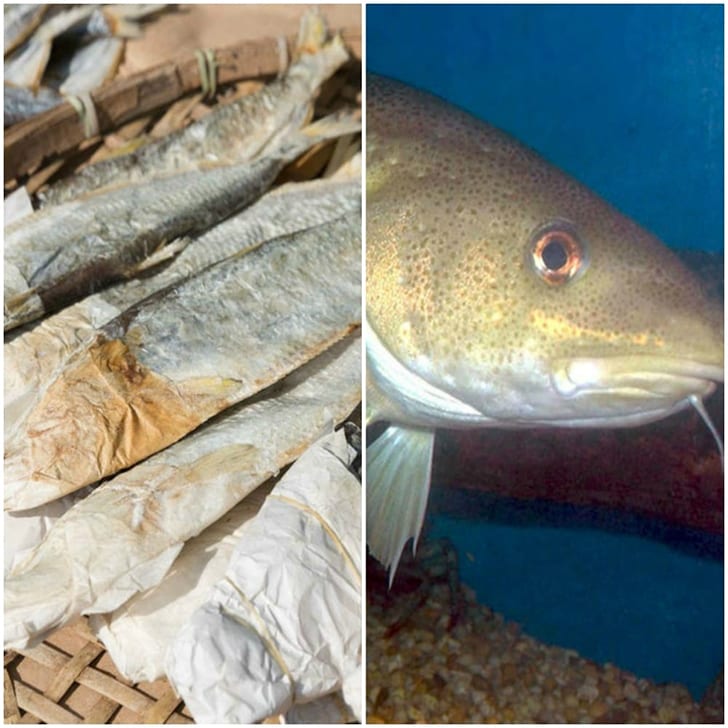
Fresh fish is just one of the many reasons why so many colonialists have decided to live near the ocean, making for the present-day demographical nature of the U.S. But back when the fridge was just a distant science-fiction mirage, salt was the best available way of conserving these delicious sea creatures.
Salted fish is still popular today, especially if you think of culinary-favorite species like the cod. Needless to say, though, fish wasn't the only type of food that was getting salted by the colonial period Americans, which used the mineral to increase the lifespan of almost all kinds of supplies.
Sassafras Tea
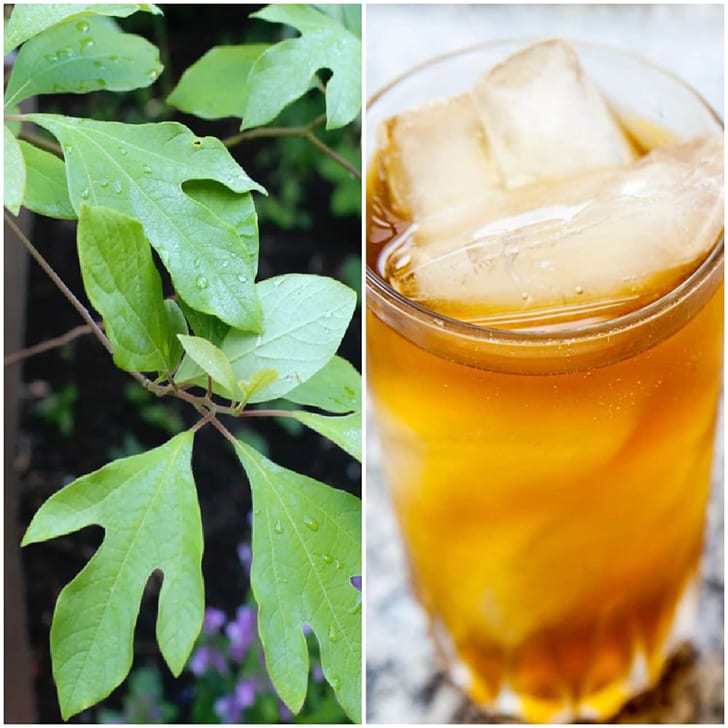
Sassafras is a type of plant native to North America that used to be extremely popular. Today, most people have never heard of it, even though it still has multiple uses in culinary, traditional medicine, or the oils and aromatics industry.
Best known for its strong and pleasant aroma, the sassafras makes for a lovely tea that was highly consumed among the early American colonialists. Additionally, sassafras tea was used as a remedy for syphilis, which, as we all know, was a very deadly and common disease about 200-300 years ago.
Perry
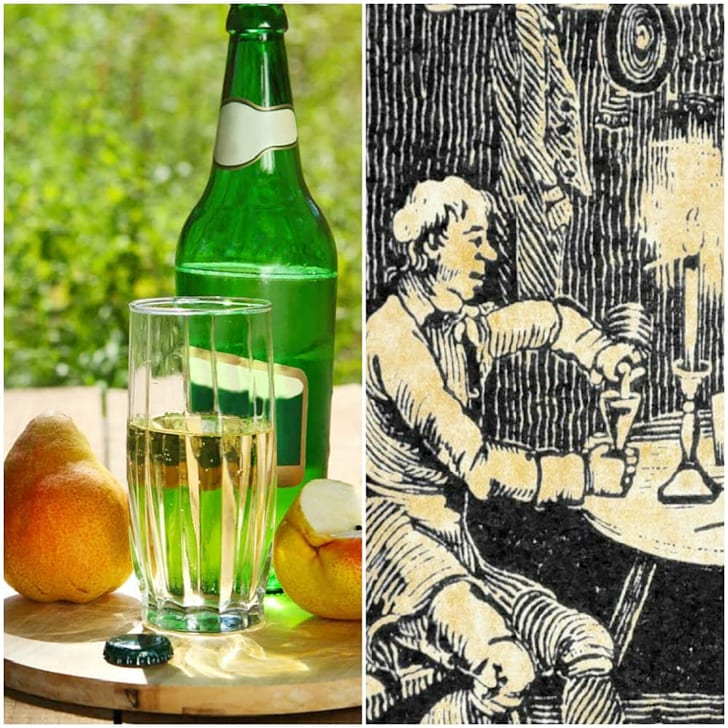
It's hard to pinpoint exactly why we don't drink that much perry anymore. Apple cider is most likely the main culprit. Just like cider is made from apples, perry is made from pears. And in colonial times, it was a hit alcoholic beverage consumed for centuries in the old continent (especially in England).
We're still waiting for a perry comeback. Some big brands have decided to remarket the traditional drink as 'pear cider,' though. Perhaps, they did so to appeal to younger consumers, and they have found great commercial success in the process.
Plum Cake
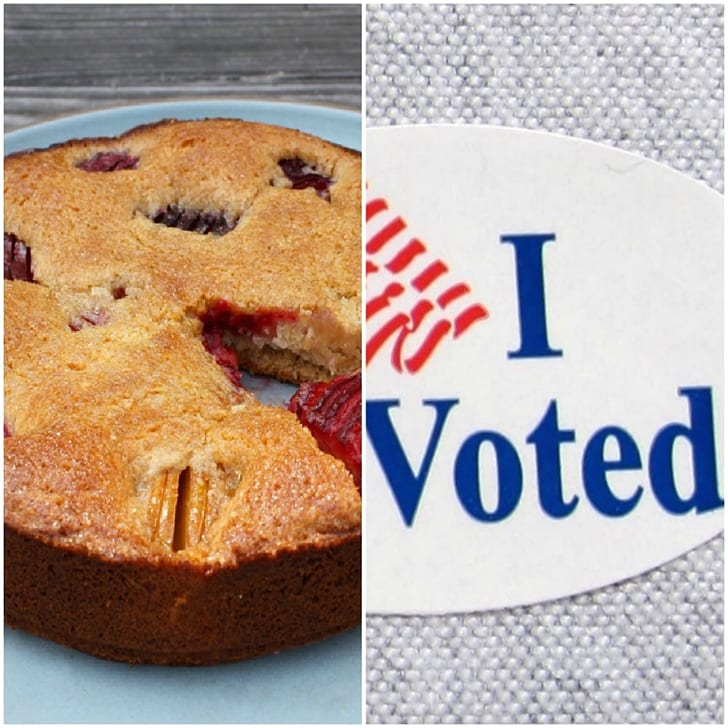
Over the years, the plum cake has been called many names, with 'election cake' being the most notable. Indeed, this delicious dried fruit-based recipe has been served during many American elections throughout the ages.
But no matter what the plum cake is being used for, one thing has always remained the same: Regardless of the fruit you put in there, you know it's going to taste good! Although an American staple, the plum cake is not exclusively American. This ever-popular type of cake is celebrated in many European countries' traditional culture, from Britain to Poland.
Coffee
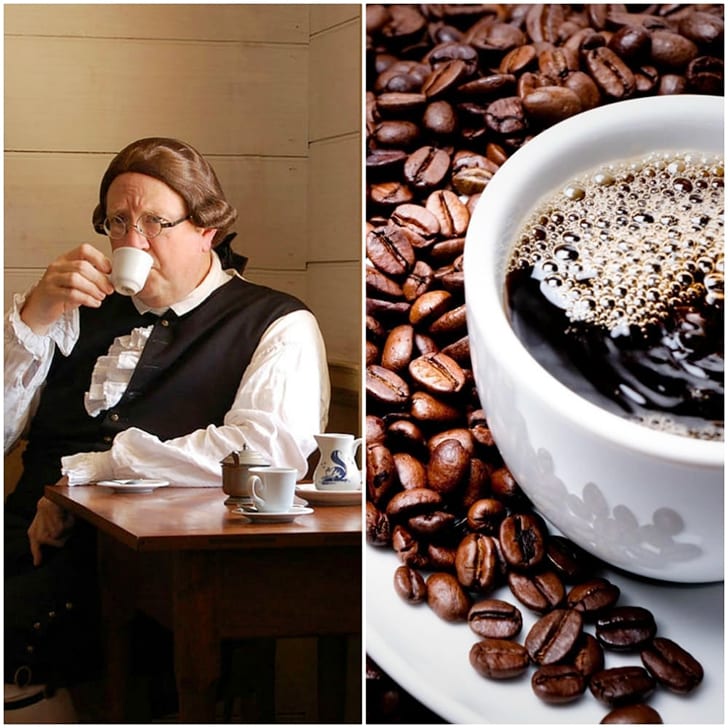
The stay-up-all-night alternative to British tea, coffee has long been one of America's favorite drinks. In the time before coffee machines made way to virtually every American household, preparing the drink was more time-consuming than getting a tea ready, but it was worth it!
Whereas tea makes for a calm and relaxing break, coffee is a drink that inspires action, movement, and energy. It's the perfect morning fix for the people of a country that's always been known for its prowess to act, invest, and make even wildest dreams come true.
